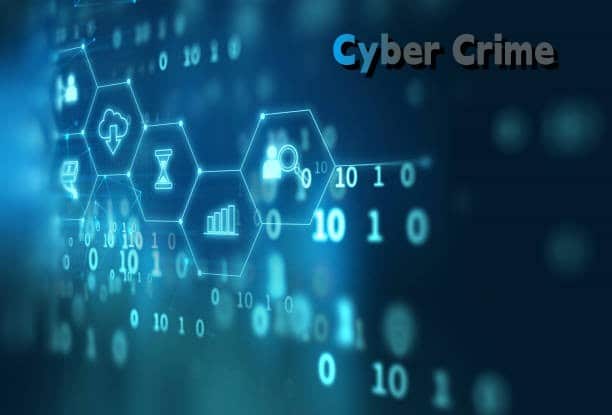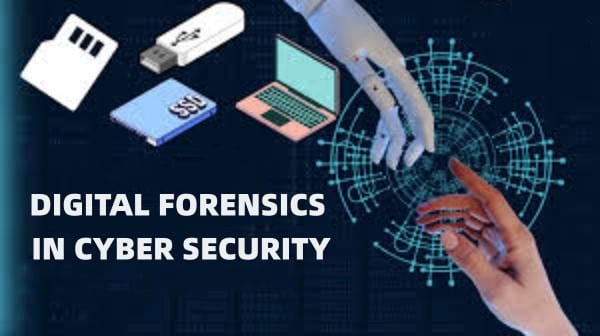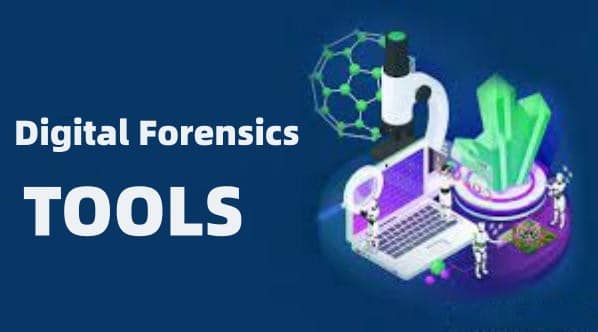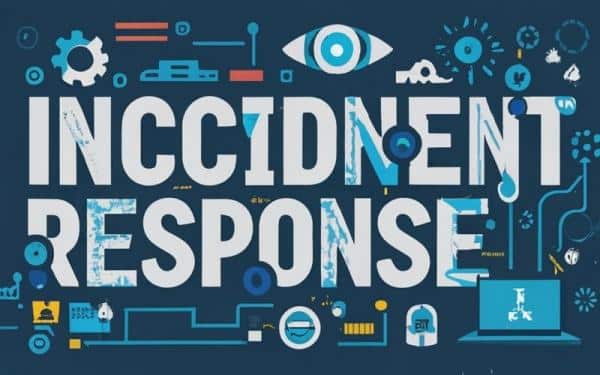Forensic Cyber Security: Insights into Digital Forensics
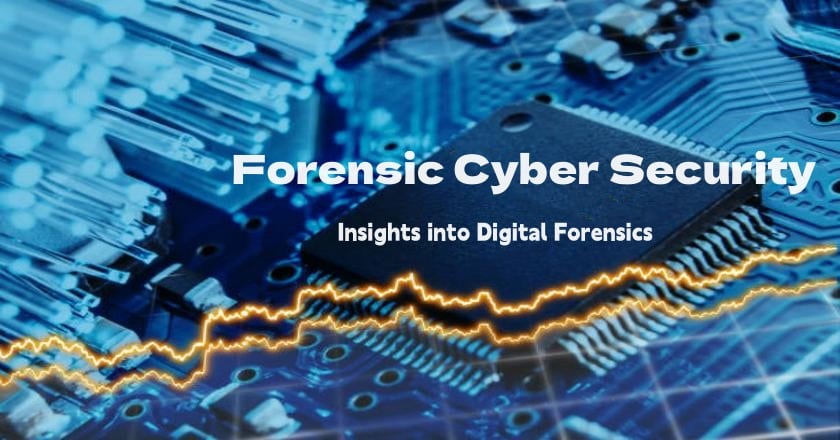
-
Content
- Introduction
- Exploring the Landscape of Cybercrime
- The Role of Digital Forensics in Cybersecurity
- Digital Forensics Tools and Techniques
- Integration with Incident Response in Forensic Cyber Security
- Conclusion
-
Content
- Introduction
- Exploring the Landscape of Cybercrime
- The Role of Digital Forensics in Cybersecurity
- Digital Forensics Tools and Techniques
- Integration with Incident Response in Forensic Cyber Security
- Conclusion
Introduction
In the realm of cyber security forensics, professionals delve into the depths of digital data to unearth evidence crucial in understanding and combating cybercrime. This intricate process, central to what we know as digital forensics cyber security, involves the meticulous analysis, preservation, and documentation of digital evidence. It’s a process that plays a pivotal role in deciphering the complexities of cyber incidents.
The field of forensic cyber security is fundamental to comprehending the tactics used by cyber criminals. It essentially addresses the question: “What is digital forensics in cyber security?” This specialization applies scientific methods to gather and scrutinize data from digital devices, providing invaluable evidence in identifying the origins of cyber attacks and security breaches.
Digital crime scenes may be recreated by professionals in cyber security forensics using a wide range of forensic instruments and methods. In a world where cyber dangers are always evolving, the methods used in digital forensics cyber security enable an in-depth analysis of digital traces.
The ability to not only respond to cyber events but also to foresee and avoid them is enhanced when cyber security digital forensics are included into larger cyber security strategy. Gaining an understanding of digital forensics in cyber security helps firms create more robust defenses and react to cyber events with more skill.
A comprehensive strategy to safeguarding digital infrastructures is crucial, as demonstrated by the confluence of cyber security and digital forensics. In order to defend against the broad array of contemporary cyber threats, it emphasizes how important it is to comprehend and successfully integrate various sectors.
Exploring the Landscape of Cybercrime
In navigating the labyrinthine world of cybercrime, it’s akin to piecing together a puzzle with ever-shifting shapes. This complex landscape is inhabited by a diverse array of actors, each with their own motives and methodologies.
1. Three Main Groups of Actors in Cybercrime
First, there are the lone hackers who try their abilities against security systems out of curiosity or other driving forces. Although they may not mean any damage, these people have the potential to do serious harm by accident. Afterward, there exist structured organizations of cyber criminals. These performers pose a special risk since they are highly competent, financially motivated, and well-funded. They plan complex assaults such as identity theft and ransomware. The last threat is that of state-sponsored actors. With a focus on national security and vital infrastructure, they engage in cyber warfare and espionage driven by political motivations
2. Role of Investigators in the Cybercrime Landscape
In this intricate scenario, investigators in forensic cyber security play a crucial role. They’re the digital detectives who meticulously sift through data, uncovering evidence that can unmask these cyber criminals. Their expertise in digital forensics allows them to trace the digital breadcrumbs left behind in the wake of a cyber attack. Investigators use digital forensics software to piece together the hows and whys of an incident, providing invaluable insights that help prevent future attacks.
3. Main Challenges and Strategies in Cybercrime Investigation
The primary challenge in cybercrime investigation is the pace of technological change. Cyber criminals constantly evolve their tactics, often staying a step ahead of security measures. To combat this, investigators must be agile and knowledgeable about the latest DFIR tools and strategies. Collaborating with cyber forensics companies and staying updated with digital forensics software advancements are key strategies. Understanding the nuances of cyber threats and security is also crucial. This involves a blend of technical acumen and a deep understanding of the human elements driving cybercrime.
To sum up, the world of cybercrime is both varied and difficult. Investigators must adopt a proactive strategy, combining cutting-edge instruments with a comprehension of the human elements involved.
The Role of Digital Forensics in Cybersecurity
At the core of cybersecurity is digital forensics, which provides light in the sometimes hazy world of cyber disasters. With an emphasis on the recognition, gathering, and examination of digital evidence, it’s similar to forensic science for the digital age.
1. Definition and Scope of Digital Forensics
Finding and analyzing electronic data is the fundamental task of digital forensics. The aim? should keep any evidence as original as possible while carrying out a methodical inquiry. This procedure covers a wide range of tasks, from examining intricate cyberattacks to retrieving lost information. Making sure the evidence can withstand scrutiny in a court of law entails legal considerations in addition to the technical ones.
2. Application in Cyber Security Operations
Digital forensics is an important field in cybersecurity. Experts in digital forensics investigate breaches to ascertain the “how” and “why” of the occurrence. To find the attackers and track down the attack’s source, they employ sophisticated software for digital forensics. This data is essential for strengthening the organization’s defenses against potential threats as well as for legal actions.
3.Tracing Footprints in Digital Investigations
Finding even the smallest digital fingerprints left by others is the discipline of digital forensics. These indicators are essential for putting the jigsaw of cybercrime together, whether it’s a small irregularity in server logs or a concealed piece of malware. These covert tracks may be found by forensic specialists using cutting-edge DFIR techniques, giving them vital information about the tactics and goals of cybercriminals.
Digging into the digital “crime scene” to provide light and answers on intricate cyber problems, digital forensics is essentially the Sherlock Holmes of the cybersecurity field.
Digital Forensics Tools and Techniques
Different methods and instruments stand out in the complex field of digital forensics for their efficacy and efficiency in the analysis of cybersecurity events. Due to their ability to offer thorough insights, facilitate the retrieval and examination of digital evidence, and help unearth the truth behind cybercrimes, these technologies are invaluable.
1. Mail Xaminer
- Overview: Best for Email Analysis and Recovery.
- Key Features: MailXaminer is widely recognized for its sophisticated email analyzing functionalities. It provides thorough forensic inspection, including keyword searches, metadata analysis, and email recovery from deletion, and supports a number of email formats.
- Technologies: The application uses advanced algorithms to recover emails quickly and offers a stable platform for email header analysis and email route tracking, which are essential for investigating cybercrimes.Contact to apply for a Free Trial now!
2. Pro Discover Forensic:
- Overview: Recognized as One of the Best Digital Forensics Tools.
- Key Features: The extensive disk imaging and analysis features of ProDiscover Forensic make it stand out. It makes data acquisition and analysis safe for investigators while guaranteeing the authenticity and admissibility of evidence.
- Technologies: In order to find hidden or deleted data, the application enables file system analysis and incorporates cutting-edge imaging technologies.
3. VIP 2.0 (Video Investigation Portable)
- Overview: An All-in-One Video Forensics Tool Used for CCTV DVR/NVR Drives developed by SalvationDATA.
- Key Features: Video forensics, which is essential for examining footage from CCTV and DVR systems, is VIP 2.0’s area of expertise. In addition to video enhancement and damaged video file recovery, it provides frame-by-frame analysis.
- Technologies: Because it uses cutting-edge technology for both video processing and recovery, this tool is the preferred choice for cyber forensic investigations involving video.Click here to Update your software!
4. Sleuth Kit (+Autopsy)
- Overview: Open-Source Toolkit for Forensic Analysis.
- Key Features: With Autopsy in addition, the Sleuth Kit offers a full set of tools for digital investigations. It is well-known for its timeline analysis, data carving, and file system analysis.
- Technologies: By utilizing open-source technology, it can be customized for forensic procedures and works with a variety of file systems, making it a flexible tool for a range of investigative situations.
5. FTK (Forensic Toolkit)
- Overview: A Widely Used Forensic Software for Data Recovery.
- Key Features: FTK is well known for its quick processing speed and comprehensive data analysis skills. It is excellent in finding lost data, examining internet traces, and producing thorough reports.
- Technologies: It can analyze big data sets quickly and employs sophisticated data carving techniques, both of which are critical for managing intricate cyber forensic investigations.
6. XRY
- Overview: A Mobile Forensics Tool for Extracting Data from Smartphones, GPS Devices, and Other Mobile Hardware.
- Key Features: Mobile forensics is the only purpose of XRY. Smartphones and GPS units are only two examples of the many mobile devices from which it excels at gathering data. When mobile data is important, this technology is essential.
- Technologies: It employs cutting-edge decryption and data extraction technologies, enabling investigators to access locked devices and recover data that might otherwise be inaccessible.
Each of these tools brings unique capabilities to the table, making them indispensable in the field of digital forensics and cyber security. From email analysis to mobile forensics, they cover a broad spectrum, ensuring that digital investigators are equipped to handle various challenges that arise in the fast-paced and ever-evolving realm of forensic cyber security.
Integration with Incident Response in Forensic Cyber Security
In the dynamic sphere of forensic cyber security, the integration of digital forensics with incident response is not just a strategy, but a necessity. This integration ensures a comprehensive approach to managing and mitigating cyber incidents, enhancing overall cyber security resilience.
1. Digital Forensics Plans in Incident Response
It is essential that the incident response procedure include a digital forensics plan. Reacting quickly to a cyber security issue is critical, but so is being able to do a forensic analysis of what transpired. This is the application of digital forensics. In a well-organized approach, the impacted systems are immediately secured to protect evidence, and then a comprehensive investigation is conducted with the use of digital forensics tools. Understanding the attack’s nature, the degree of the harm, and the attackers’ strategies are the goals of this research. Organizations may improve their ability to address the present issue and strengthen their defenses against future threats by incorporating these insights into their incident response strategy.
2. Coordinated Efforts for Cyber Security Resilience
For resilience building, digital forensics and other cyber security components must work together seamlessly. Incident response teams, specialists in digital forensics, and other cyber security specialists collaborate in this collaborative approach. These teams are able to share information and ideas that contribute to a deeper comprehension of the cyber threats encountered by employing instruments such as digital forensics software and DFIR technologies. Digital forensic investigations may also provide valuable insights that can guide the creation of security policies, training curricula, and defensive systems that are more effective. In addition to helping to take preventative action against possible future threats, this concerted effort solves the immediate difficulties posed by a cyber attack.
In summary, the integration of digital forensics into incident response is a critical component of effective forensic cyber security strategies. It enables organizations to not only react swiftly to incidents but also to learn from them, thereby enhancing their overall cybersecurity posture and resilience against the ever-evolving landscape of cyber threats.
Conclusion
In conclusion, the exploration of forensic cyber security reveals a multifaceted domain where the precision of digital forensics intersects with the dynamism of cyber security. The journey through the digital landscapes of cybercrime underscores the necessity of understanding the diverse actors involved and the crucial role of investigators who utilize an array of sophisticated tools and techniques. These include solutions like Mail Xaminer, Pro Discover Forensic, VIP 2.0, Sleuth Kit with Autopsy, FTK, and XRY, each playing a pivotal role in unearthing the digital truths hidden within complex cyber incidents.
The ability of digital forensics to be seamlessly integrated into incident response plans emphasizes how crucial coordinated efforts are to creating a robust cyber security framework. Through this partnership, it is ensured that not only are current cyber threats effectively handled, but that defenses against future vulnerabilities will be strengthened as well.
In the end, the field of forensic cyber security is proof of the ongoing development and adaptability needed to counteract hackers that are always evolving. In order to ensure that businesses are prepared to face and conquer the cyber security issues of both the present and the future, this sector needs a combination of technical competence, strategic insight, and a profound grasp of the digital world.
